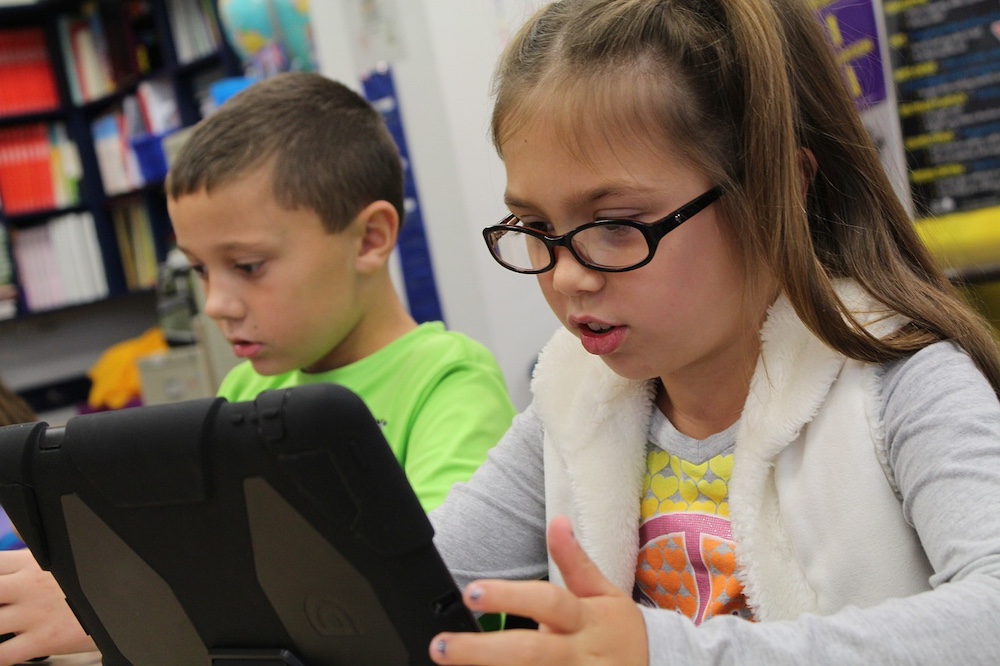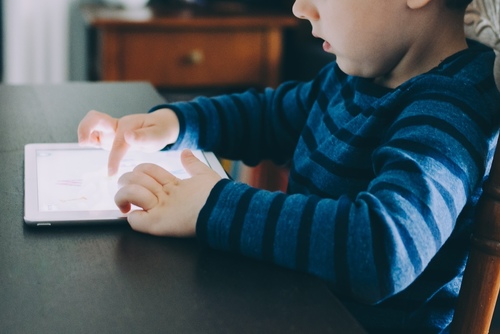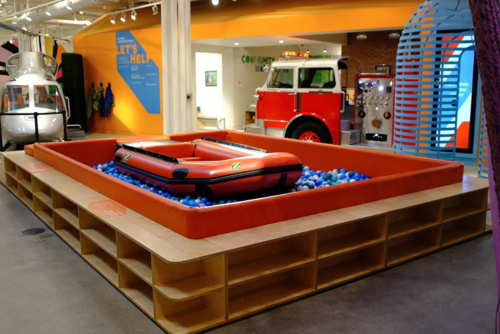Do kids stand to gain so much from integrating technology into the curriculum, or will this bring more harm than good? Is limiting screen time more important than potential educational games? Let’s dig a bit deeper into the role of technology in kindergarten education to find out.
More materials for different learning styles
There’s no perfect learning material, but many different learning styles exist. There are four major styles
Visual learners: For instance, most people are visual learners, meaning they understand things best when presented with learning material in a visual format. Color coding, graphs, charts, etc, are just examples. Today, with interactive formats, these models are more effective than ever.
Auditory learning: Some people respond the best when listening to the learning material. This way, they understand the material the best. Whether these lessons are spoken or sung, they’ll understand it the best if they’ve heard it. Today, these auditory materials are available more than ever before, and the level of interactivity available is quite impressive.
Read/write learners: This is the classical concept of a learner, where text-based materials like textbooks and notes give the best result. While this method was the most prominent in the past, this was never due to its effectiveness but convenience and the fact that this medium could reach the most people. Today, this is no longer the case.
Tactile learners: While remote teaching and leveraging technology seem the furthest from kinaesthetic learning, you would be wrong. The truth is that there’s so much room for technology to seep into the real world (just take games like Pokemon GO as an example).
Kids can benefit immensely from well-curated materials tailored to different learning styles. For instance, technologies that support interactive and visual formats are now more effective than ever. Tools like Knowt’s teacher resources offer AI-powered flashcards that comply with student privacy standards like FERPA and COPPA, ensuring a secure and engaging learning experience.
These four learning styles are hardly anything new, but so much can be improved this way.
Benefits of remote learning
When we say digital learning, we’re not talking about how kids were taught during the pandemic. Kids can still attend kindergarten and learn from lecturers who tune in via a stream.
The biggest benefit is that these specialists are far better qualified on the subjects in question than kindergarten teachers, which hardly comes as a surprise. When you choose remote learning, you can bring in the brightest, most qualified people in the field at any moment.
According to specialists from Livestream Learning Studio, kids can attend exciting virtual events, which will further increase their immersion, and they’ll do this in the setting they’re already accustomed to. The biggest challenge is always the matter of immersion and motivation, and kids who are growing up in the digital era might quickly lose focus if the material is too dry and outdated.
Tuning into these educational streams is incredibly easy, and the process falls on the teachers at the kindergarten. Still, they can even include some students to deepen the process further.
Better Options for Parental Involvement
Let’s not kid ourselves and admit that, in today’s world, parents are more involved in kids' education than ever before. In the past, kids were expected to master all these learning materials independently and with the teacher's help, but today, ambitious parents teach their kids how to read, write, and count long before they reach the first grade.
Another major advantage lies in how students access materials to repeat the learning process at home (or on vacation) with their parents.
Parents can also control their kids' progress at school and even review the materials that kids have access to. This way, they can track the curriculum and align their learning methods with this curriculum to get a superior continuity.
Now, feedback, reports, and progress are as important to parents as they are to the learners and the platforms. By making them accessible and available, the transparency will be a lot greater. This is hardly a surprise since, with very young children, cooperation is the only way to further education.
A New Era
Next, you need to understand that we live in a new world. This world poses new challenges, and a modern job market (which awaits them) requires new skills. You may be nostalgic for your childhood but pause and think about how the world has changed. Twenty years from now, will your kids benefit more from knowing how to play marbles or understanding AR and mastering touchscreen technology?
The answer is simple.
Today, kids are more likely to play video games together online than to play outside. Even if you make restricted food for your kid, other parents won’t do the same, so you risk making your kid a social pariah. It may sound unfair, but you can do nothing to change the zeitgeist.
Rather than restricting your kid from their Nintendo Switch, you can use it as a tool of a reward and punishment system. Help them understand the technology, and you’ll better mitigate negative effects.
Screen Time Concerns
When it comes to screen time, the most important thing is consistency. Kids shouldn’t feel that you’re coming up with the rules on the go. They need to feel that there’s a pattern, even if they don’t fully understand it.
Remember that it’s not just about the tech but the type of content they consume. So, use parental control software to restrict potentially problematic content.
Another thing you need to learn is how to lead by example. If you believe staring at the screen an entire day is bad for them, you must avoid doing the same. Sitting on the couch staring at the phone while it’s a no-tech hour for them will feel unfair, which will spark their rebelliousness, even if they don’t show it immediately.
Wrap Up
Technology has many positive aspects, and one of the fields that it can improve the most is education (even at the kindergarten level). As for the downsides, they’re usually blown out of proportion, and even real ones are easy to remedy. It’s down to adults to develop a great system and set ground rules to benefit everyone.








